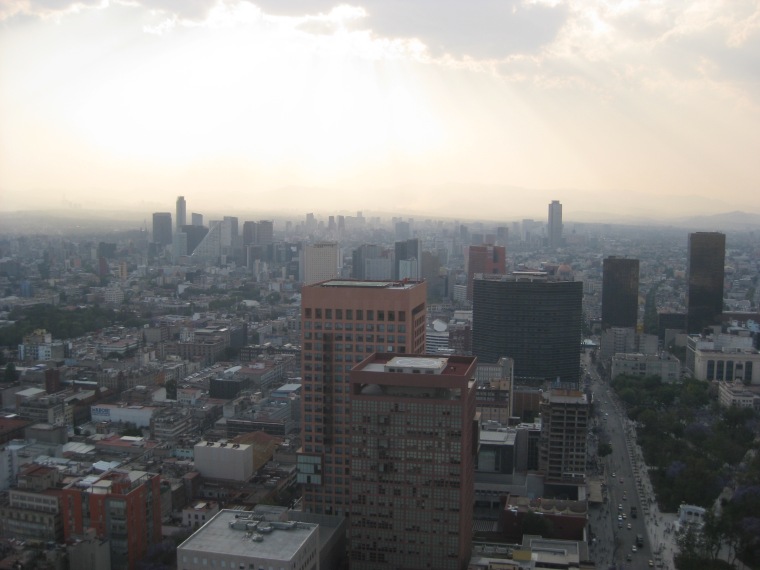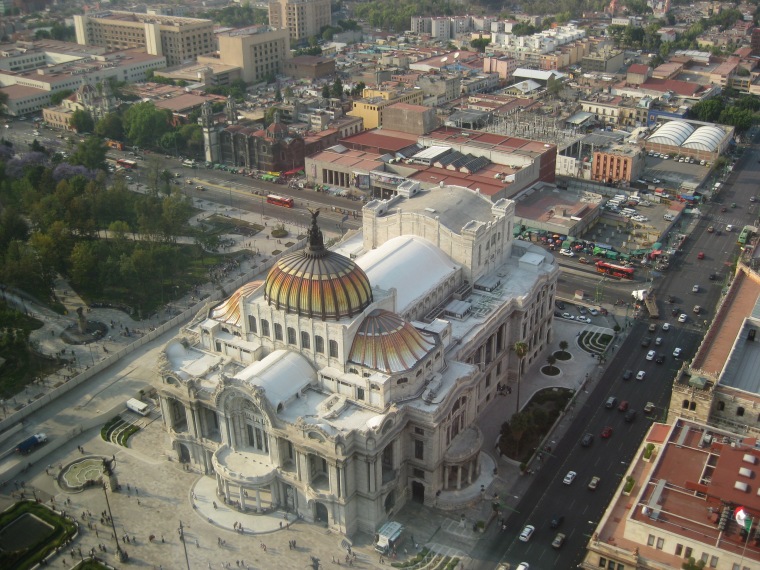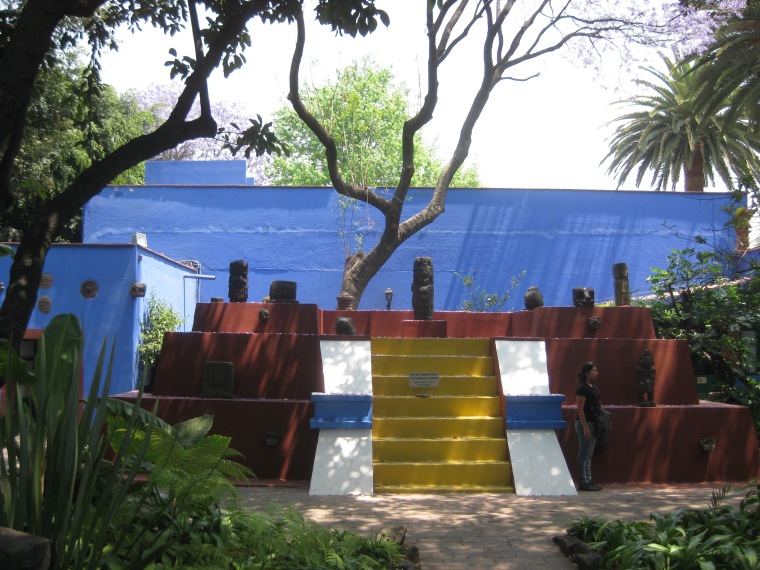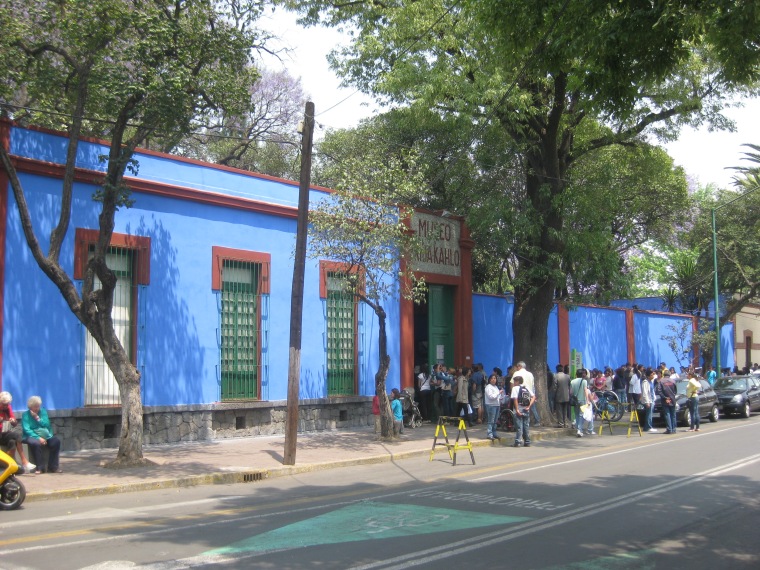Another of our highlights during our first few days in Mexico City was soaring to the top of the Torre Latinoamerica. Once the tallest building in Mexico City, it is now owned by Carlos Slim, Mexican national and the wealthiest man in the world since 2010, according to Forbes. Evidently, he has bought up acres of property in the historic center of Mexico City and initiated projects to have some of the major arteries pedestrianized. The view from the top of the Torre was impressive. Through the hazy late afternoon light, we could make out the business district, bordered by the most affluent neighborhood and beyond, miles of concrete block, half-built dwellings stretched almost to infinity.
More disappointing was the Palacio de Bellas Artes. Expecting grand murals by the most ubiquitous names in Mexican art, we found those, but they were ruined by the layout of the interior. Giant paintings were chopped up by the pillars of the building and the viewer couldn’t get far enough away from each work to see more than a jumble of bright colors assaulting his visual perception. Also, the separate galleries dedicated to various artists were in the middle of receiving a coat of paint during our visit and wouldn’t be open again until the middle of April. When we asked about them, the guest relations representative promptly invited us back to Mexico in another month and said they’d be waiting on us! Sounds like hospitality to me!
A visit to the establishment that houses houses arguably Diego Rivera’s most famous and informative work made up for the earlier underwhelming experience. Sueño de una tarde dominical en la Alameda Central rests inside a bare room within a building that, although it only features one piece of artwork, calls itself a veritable museum. It depicts Mexican history through the interpretation of Diego, of course featuring him at the center, gazing at his wife and lover, Frida Kahlo. No pictures from inside since the proprietors charged extra for that luxury. The painting is worth a google, though.
Continuing our pilgrimage to visit the sites dedicated to modern Mexican art, we took a 45-minute metro trek out to Coyoacán, the birth place of Frida Kahlo. Frida is a legend in Mexican art and her story is as heartbreaking as it is fascinating. As a little girl she contracted polio, which left one leg longer than the other. Then, as an 18-year old, probably ready to venture out on her own and find out what life had in store for her, she was involved in a dramatic street car accident. She was impaled by one of the poles on the vehicle and suffered immense pain caused by the trauma for the rest of her life. Her personal life is no less interesting. Wife and lover of fellow Mexican revolutionary artist, Diego Rivera, her spirit continued to endure challenges as they lived out a volatile relationship that involved unfaithfulness, divorce and later remarriage. If one solace could be found in her life, she resided on a cool tree lined street in a budding bohemian neighborhood and her home of blue stucco was inviting and bright. Her open, airy home was a mansion, even by today’s standards. The easel she used, a gift from Nelson Rockefeller, faced onto an open courtyard where water fountains bubbled cheerily and the sun warmed the stones. Frida and Diego did agree politically: both left-wing communist supporters, they even provided a place for Leon Trotsky to live when he was exiled from Russia.
Seeing where Frida did the majority of her work and visiting the barrio that was the backdrop to her life definitely tops the list of my Mexican experiences. Like my mom said, this trip was as much vacation as it was continuing education for us. The only unit I clearly remember from high school Spanish 4 was the chapter on art. As deeply disturbing as some of the images that Frida shared with the world on canvas are, I’ve never felt repulsed by her, only felt a sadness for the damage and pain she suffered. Getting to see her home and some of her original work was worth the trip.








